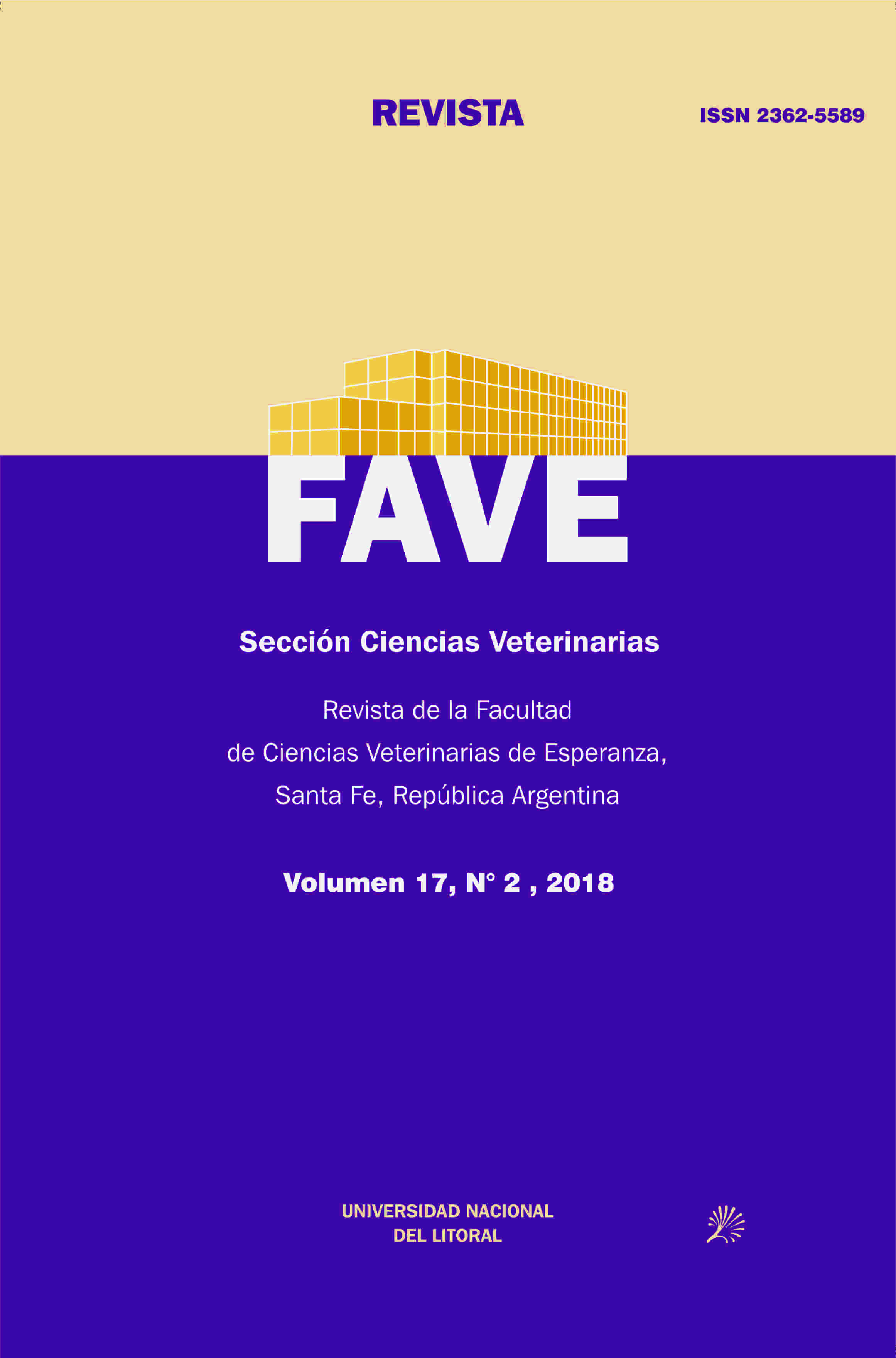Ver ítem
- xmlui.general.dspace_homeCentros Regionales y EEAsCentro Regional Salta - JujuyEEA SaltaArtículos científicosxmlui.ArtifactBrowser.ItemViewer.trail
- Inicio
- Centros Regionales y EEAs
- Centro Regional Salta - Jujuy
- EEA Salta
- Artículos científicos
- Ver ítem
Intervención del ser humano en el proceso de destete de cabritos lecheros: parámetros fisiológicos y comportamiento animal = Human intervention in dairy kids weaning process: physiological parameters and animal behavior
Resumen
La intervención de los seres humanos en los procesos de cría y recría en animales de producción pueden tener diferente impacto en virtud al tipo, momento y duración de la misma. El objetivo del trabajo fue evaluar si existen cambios en parámetros fisiológicos, sanguíneos y de comportamiento en cabritos Saanen en función al tipo de crianza, 10 criados con sus madres (CT) vs. 10 criados artificialmente (CA), en las etapas de lactante y recría. Semanalmente
[ver mas...]
La intervención de los seres humanos en los procesos de cría y recría en animales de producción pueden tener diferente impacto en virtud al tipo, momento y duración de la misma. El objetivo del trabajo fue evaluar si existen cambios en parámetros fisiológicos, sanguíneos y de comportamiento en cabritos Saanen en función al tipo de crianza, 10 criados con sus madres (CT) vs. 10 criados artificialmente (CA), en las etapas de lactante y recría. Semanalmente se midió: frecuencia cardiaca (FC), temperatura rectal (TR), frecuencia respiratoria (FR), predisposición a ser atrapado y actitud de patear. Previo se tomaron 10 ml de sangre para realización del leucograma. El diseño experimental fue el de mediciones repetidas en el tiempo. Los datos fueron analizados a través del programa InfoStat. Ni entre periodos ni entre tratamientos se detectaron diferencias significativas para FC como TR. En ambos periodos a los animales del CT resultó más difícil atraparlos (lactante: p<0,0001, recría: p<0,0020). En la etapa de lactantes la cantidad de animales que pateaban fue superior (p<0,05) en CT, mientras que en recría no existieron diferencias. Durante la etapa de lactantes los conteos de neutrófilos del grupo CT fueron mayores (p<0,0001) y los de linfocitos menores (p<0,0001). Durante recría se hallaron diferencias (p<0,0001) entre grupos y la relación neutrófilos/linfocitos fue superior (p<0,0001) en un 50% en los CT. En función a lo obtenido es posible concluir que si bien existe un grado de estrés cuando el animal no habituado al ser humano se enfrenta a éste en manejos que ameriten su captura, el contacto en etapas tempranas permite aumentar el nivel de docilidad a la vez facilita la ejecución de tareas rutinarias.
[Cerrar]
Human intervention in breeding and rearing processes may have different impact in animals related to the type, moment and duration. The aim of the study was to evaluate if there are changes in physiological, blood and behavioral parameters in Saanen kids according to type of type of breeding, 10 raised with their mothers (CT) vs. 10 artificially reared (CA), in pre-weaning and post-weaning stages. Heart rate (HR), rectal temperature (TR), respiratory
[ver mas...]
Human intervention in breeding and rearing processes may have different impact in animals related to the type, moment and duration. The aim of the study was to evaluate if there are changes in physiological, blood and behavioral parameters in Saanen kids according to type of type of breeding, 10 raised with their mothers (CT) vs. 10 artificially reared (CA), in pre-weaning and post-weaning stages. Heart rate (HR), rectal temperature (TR), respiratory frequency (FR), predisposition to be caught and kicking attitude were measure once a week. Prevously, 10 ml of blood was collected for leukogram determination. Experimental design was repeated measurements in CRD. Data were analyzed by InfoStat program. Neither between periods nor between treatments were significant differences detected for HR as TR. CT animals were more difficult to catch in both periods (pre-weaning: p <0.0001, post-weaning: p <0.0020). In pre-weaning stage the number of animals that kicked was higher (p <0.05) in CT, whereas during rearing period there were no differences. During pre-weaning, neutrophil counts of the CT group were higher (p <0.0001) and lymphocytes lower (p <0.0001) than in rearing stage. During rearing differences were found (p <0.0001) between groups and the neutrophil / lymphocyte ratio was higher (p <0.0001) by 50% in the TC. It is possible to conclude that although animals can become stressed when caught; contact with humans in early stages allows increasing the level of docility and, at the same time, facility the execution of routine tasks.
[Cerrar]

Fuente
FAVE. Sección ciencias veterinarias 17 (2) : 45 - 49. (2018)
Fecha
2018
Editorial
Facultad de Ciencias Veterinarias de Esperanza, Universidad Nacional del Litoral
ISSN
1666-938X
2362-5589 (Online)
2362-5589 (Online)
Formato
pdf
Tipo de documento
artículo
Palabras Claves
Derechos de acceso
Abierto
 Excepto donde se diga explicitamente, este item se publica bajo la siguiente descripción: Creative Commons Attribution-NonCommercial-ShareAlike 2.5 Unported (CC BY-NC-SA 2.5)
Excepto donde se diga explicitamente, este item se publica bajo la siguiente descripción: Creative Commons Attribution-NonCommercial-ShareAlike 2.5 Unported (CC BY-NC-SA 2.5)


